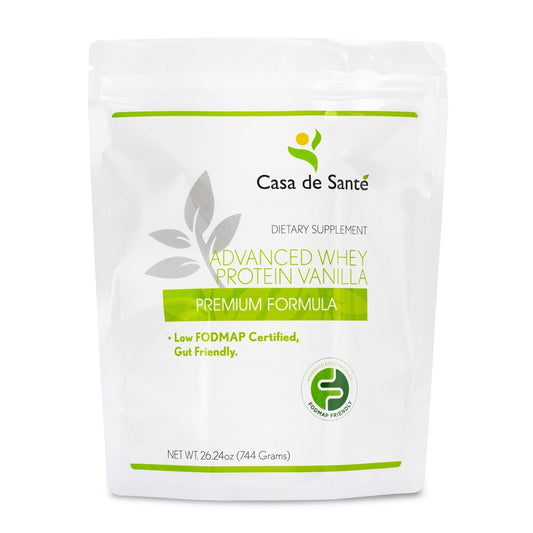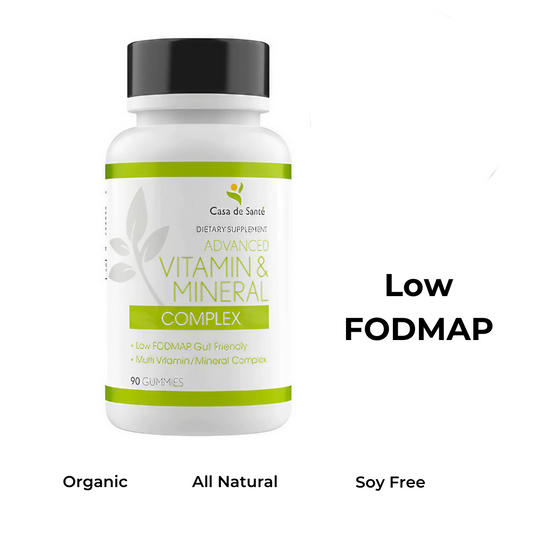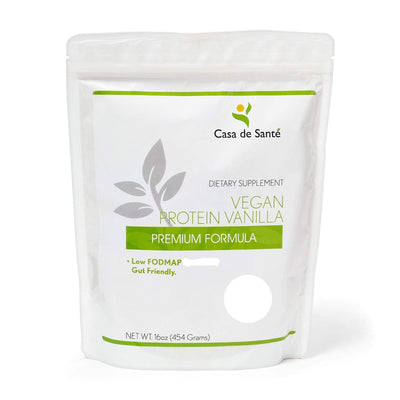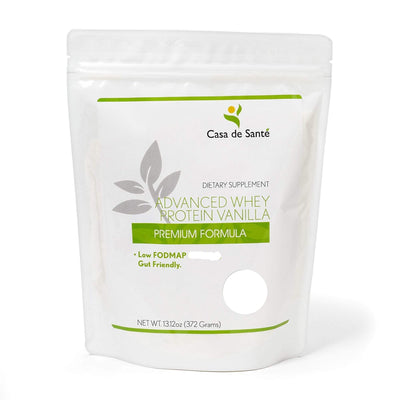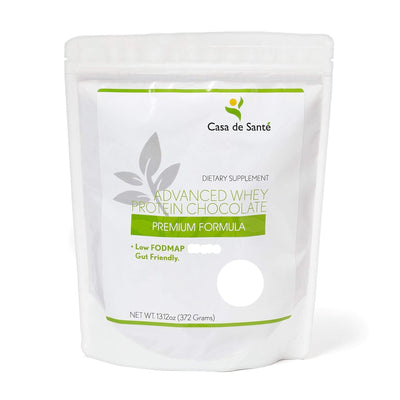Managing Diarrhea on the Paleo Diet: Causes and Solutions
Managing Diarrhea on the Paleo Diet: Causes and Solutions
Transitioning to the Paleo diet can be a game-changer for many people seeking improved health and wellness. However, this dietary shift can sometimes come with unexpected digestive challenges, including diarrhea. If you've recently embraced the Paleo lifestyle and found yourself making more frequent trips to the bathroom, you're not alone. This common yet uncomfortable side effect has several potential causes—and fortunately, just as many solutions.
Why Diarrhea Occurs When Starting Paleo
The Paleo diet, with its focus on whole foods like meats, fish, eggs, vegetables, fruits, nuts, and seeds, represents a significant shift from the standard Western diet. This abrupt change can trigger digestive distress as your body adjusts to processing different types and quantities of nutrients.
When you suddenly increase your intake of certain foods while eliminating others, your digestive system needs time to adapt. This adaptation period varies from person to person, but understanding the specific mechanisms can help you navigate this transition more comfortably.
Increased Fat Consumption
One of the most common culprits behind Paleo-related diarrhea is the dramatic increase in dietary fat. The Paleo diet typically includes more fat than many people are accustomed to consuming. When you suddenly boost your fat intake, your gallbladder may struggle to produce enough bile to properly digest it all.
This insufficient bile production can lead to malabsorption of fats, which in turn causes loose stools or diarrhea. Your body essentially rushes the undigested fat through your digestive tract, resulting in that uncomfortable urgency you might be experiencing.
Sudden Increase in Fiber
The Paleo diet emphasizes vegetables, fruits, and nuts—all excellent sources of dietary fiber. While fiber is undoubtedly beneficial for long-term gut health, a rapid increase can temporarily disrupt your digestive system, especially if you're coming from a low-fiber diet.
Your gut bacteria need time to adjust to breaking down this additional fiber. During this adjustment period, you might experience bloating, gas, and diarrhea as your microbiome recalibrates to handle the new fiber load.
FODMAPs in Paleo-Approved Foods
Even though the Paleo diet eliminates many problematic foods, it still includes several high-FODMAP items that can trigger digestive distress in sensitive individuals. FODMAPs (Fermentable Oligosaccharides, Disaccharides, Monosaccharides, and Polyols) are types of carbohydrates that some people have difficulty digesting.
Common Paleo-friendly foods high in FODMAPs include certain fruits (apples, pears, mangoes), vegetables (cauliflower, mushrooms, onions), and nuts (pistachios, cashews). For those with FODMAP sensitivities, these otherwise healthy foods can cause significant digestive upset, including diarrhea.
How to Resolve Paleo-Related Diarrhea
If you're experiencing digestive issues on your Paleo journey, don't despair. With some strategic adjustments, you can often resolve these problems while still enjoying the benefits of this ancestral eating pattern.
Gradual Transition Strategy
Rather than diving headfirst into Paleo, consider easing into the diet over several weeks. Start by replacing one meal a day with Paleo-approved foods, then gradually increase until you've fully transitioned. This approach gives your digestive system time to adapt to the new food types and quantities.
Pay particular attention to how you introduce higher-fat foods. Begin with leaner cuts of meat and moderate amounts of healthy fats like avocados and olive oil, then slowly increase as your digestion improves. This measured approach can prevent overwhelming your gallbladder and digestive enzymes.
Digestive Support Supplements
Certain supplements can ease the transition to a Paleo diet by providing additional digestive support. Digestive enzymes, particularly those containing lipase (for fat digestion), can be extremely helpful during the adaptation phase. Casa de Sante offers specialized digestive enzyme formulations that are particularly effective for those transitioning to higher-fat, higher-fiber diets like Paleo. Their enzymes are certified low FODMAP, making them an excellent choice for those with sensitive digestive systems.
Probiotics and prebiotics can also play a crucial role in rebalancing your gut microbiome during dietary transitions. Casa de Sante's probiotic and prebiotic supplements are specifically formulated to support gut health without triggering FODMAP-related symptoms, helping to establish a more resilient digestive system as you adapt to your new eating pattern.
Temporary Low-FODMAP Modifications
If you suspect FODMAPs might be contributing to your digestive distress, consider temporarily adopting a low-FODMAP version of the Paleo diet. This doesn't mean abandoning Paleo principles—just being more selective about which Paleo-approved foods you consume during the adjustment period.
Focus on low-FODMAP vegetables like carrots, cucumbers, and zucchini, and fruits such as bananas, oranges, and grapes. Choose lower-FODMAP nuts like macadamias and walnuts instead of pistachios or cashews. As your gut health improves, you can gradually reintroduce higher-FODMAP foods to determine your personal tolerance levels.
Specific Food Strategies for Managing Diarrhea
Beyond the broader approaches outlined above, certain specific food strategies can help manage diarrhea while maintaining the integrity of your Paleo diet.
Binding Foods to Include
Some Paleo-friendly foods have natural binding properties that can help firm up loose stools. Cooked and cooled white rice is technically not Paleo but is often included in modified Paleo approaches specifically for its binding effect during digestive upset. Similarly, cooked and cooled sweet potatoes contain resistant starch that can help normalize bowel movements.
Bone broth is another excellent option that's fully Paleo-compliant. Rich in gelatin and collagen, bone broth can soothe the digestive tract while providing easily absorbable nutrients during periods of diarrhea. Consider making a large batch to sip throughout the day when your digestion is particularly troubled.
Healing Foods for Gut Recovery
Certain foods have specific gut-healing properties that can accelerate recovery from digestive distress. Fermented foods like sauerkraut and kimchi (in small amounts if you're FODMAP-sensitive) introduce beneficial bacteria that can help rebalance your gut microbiome.
Ginger and turmeric have powerful anti-inflammatory properties that can calm an irritated digestive tract. Try incorporating these into your meals or enjoying them as teas. For protein intake during sensitive periods, consider using a gut-friendly protein powder like those from Casa de Sante, which are specifically formulated to be gentle on the digestive system while providing essential nutrition.
Paleo-Friendly, Low-FODMAP Recipe for Digestive Recovery
Soothing Chicken and Ginger Soup
When dealing with digestive upset, sometimes the simplest foods are the most healing. This gentle soup combines gut-soothing ingredients that won't aggravate diarrhea while still providing essential nutrition during recovery.
Title: Soothing Chicken and Ginger Bone Broth Soup
Description:
A gentle, healing soup that combines the gut-soothing properties of bone broth with anti-inflammatory ginger and easily digestible proteins and vegetables. Perfect for calming digestive distress while maintaining Paleo principles.
Ingredients:
- 8 cups homemade chicken bone broth (or high-quality store-bought)
- 2 boneless, skinless chicken breasts
- 2 tablespoons fresh ginger, finely grated
- 1 tablespoon olive oil
- 1 cup carrots, peeled and thinly sliced
- 1 cup zucchini, quartered and sliced
- 1/2 teaspoon sea salt
- 1/4 teaspoon turmeric powder
- Fresh parsley for garnish (optional)
Instructions:
- In a large pot, heat the olive oil over medium heat.
- Add the grated ginger and cook for 1 minute until fragrant.
- Pour in the bone broth and bring to a gentle simmer.
- Add the chicken breasts and simmer for 15-20 minutes until cooked through.
- Remove the chicken and shred it with two forks.
- Return the shredded chicken to the pot and add the carrots, turmeric, and salt.
- Simmer for 10 minutes, then add the zucchini and cook for another 5 minutes.
- Taste and adjust seasoning if needed.
- Serve hot, garnished with fresh parsley if desired.
Prep Time: 10 minutes
Cook Time: 35 minutes
Yield: 4 servings
Cuisine: Paleo, Low-FODMAP
When to Seek Medical Advice
While some digestive adjustment is normal when transitioning to Paleo, persistent or severe diarrhea warrants medical attention. If your symptoms last longer than two weeks despite implementing the strategies discussed in this article, it's time to consult a healthcare provider.
Similarly, if you experience additional concerning symptoms such as blood in your stool, severe abdominal pain, fever, or signs of dehydration (extreme thirst, dark urine, dizziness), seek immediate medical care. These could indicate a more serious condition unrelated to your dietary changes.
Personalized Approach to Gut Health
Everyone's digestive system is unique, and what works for one person may not work for another. This is where personalized approaches become invaluable. Consider working with a healthcare provider or nutritionist who specializes in digestive health and Paleo nutrition to develop a customized plan.
Casa de Sante offers personalized meal plans that can be particularly helpful during this transition period. Their plans combine Paleo principles with low-FODMAP considerations, creating a tailored approach that supports your digestive health while still allowing you to enjoy the benefits of ancestral eating.
Conclusion
Diarrhea during the transition to a Paleo diet is a common but typically temporary challenge. By understanding the potential causes—whether increased fat consumption, higher fiber intake, or FODMAP sensitivities—you can implement targeted strategies to address your specific situation.
Remember that your body needs time to adapt to significant dietary changes. Be patient with yourself, implement changes gradually, and don't hesitate to use supportive supplements and healing foods to ease the transition. With the right approach, you can overcome these initial digestive hurdles and go on to enjoy the numerous health benefits that the Paleo lifestyle has to offer.
The journey to optimal health is rarely a straight line, but with persistence and the right tools, digestive harmony on the Paleo diet is absolutely achievable. Your body is remarkably adaptable—give it the time and support it needs to thrive on your new nutritional path.








